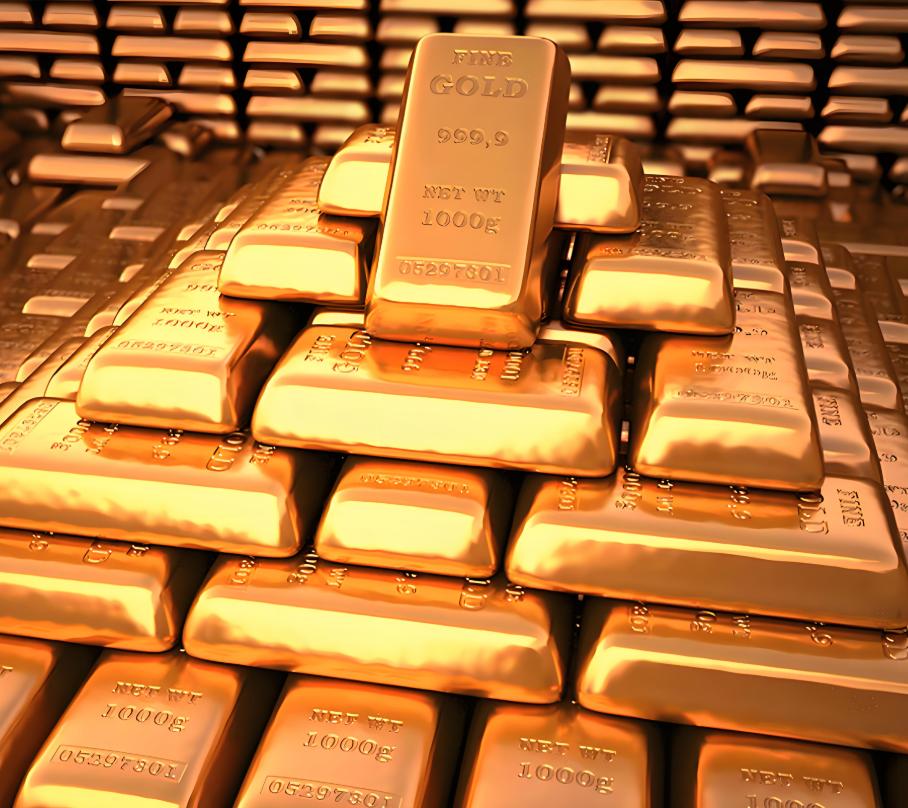
On September 29th local time, the spot gold price continued to rise, breaking through the $3,780, $3,790, $3,800, $3,810, $3,820 and $3,830 per ounce levels successively. The price rose by more than $60 within the day, with an increase of approximately 2%, reaching a new high of $3,831.2 per ounce. The futures price reached $3,857.7 per ounce. Goldman Sachs predicted in its report in early September that under the benchmark scenario, the international gold price would soar to $4,000 per ounce by 2026; in the "tail risk scenario", the gold price could reach $4,500 per ounce; if only 1% of the funds in the US private-held treasury market flowed into gold, the gold price would be expected to approach $5,000 per ounce.
The rapid rise of the international gold price has caused a stir in the financial field, bringing complex and multi-faceted impacts. Firstly, it has an impact on market sentiment and investors. The new high of the gold price has led to the rise of the prices of precious metals such as silver and platinum. The new high of the gold price has further stimulated the enthusiasm of investors, bringing a climax to the bullish sentiment in the market, which has driven the trading activity in the gold and related precious metals markets. Gold ETF investment remains a key driver of the total demand for gold, and the total investment in gold bars and coins in the second quarter also increased year-on-year. As the gold price continues to rise, market volatility also intensifies. Analysts have warned that after the release of a series of important global economic indicators this week, there may be profit-taking. At the same time, in the face of the new high of the gold price, investors need to re-evaluate their investment strategies. Some investors may choose to take profits, while others may continue to hold or increase their gold investment. The new high of the gold price also reminds investors to pay more attention to market risks, reasonably control positions, and avoid blind buying and selling. In the context of the new high of the gold price, investors can consider including gold as part of their asset allocation to achieve risk diversification and wealth preservation.
Secondly, it has an impact on other financial markets. The new high of the gold price has led to the rise of the prices of precious metals such as silver and platinum. For example, the spot silver price once broke through $47 per ounce, reaching a new high in the past 14 years. This shows the linkage effect among the precious metal markets. At the same time, the new high of the gold price may have an impact on the currency market. On the one hand, the rise in the gold price may push the US dollar to weaken, as gold and the US dollar usually have a negative correlation. On the other hand, the rise in the gold price may trigger changes in market expectations for future monetary policies, thereby affecting the trend of the currency market. Although the new high of the gold price has no direct correlation with the stock market, it may also indirectly affect the stock market through influencing investor sentiment and market risk preferences. For example, in the context of the rising gold price, some investors may become more cautious in investing in the stock market, thereby affecting the capital flow and trend of the stock market.
Thirdly, it has an impact on the economy. The new high of the gold price often reflects market expectations for economic prospects and the benchmark for the stability of the global financial system. In the current context of weak global economic recovery and intensified geopolitical tensions, the new high of the gold price may indicate an increase in market concerns about economic uncertainty. The new high of the gold price may also have an impact on monetary policies. For example, the expectation of the Federal Reserve to cut interest rates is one of the important factors driving the rise in the gold price. And the new high of the gold price may further affect market expectations for monetary policies. Under the impetus of the diversified reserve demand of global central banks, the new high of the gold price may further promote the "de-dollarization" process. Currently, the proportion of the US dollar in the reserves of global central banks has dropped from 60% in 2000 to 43% last year, and the proportion of gold reserves has been continuously rising in recent years.
In conclusion, the continuous rise of international gold prices has not only provided investors with an opportunity window for asset allocation, but also presented more severe risk management challenges for financial institutions and regulatory authorities. In the future, whether the gold market can maintain its strength will depend on the combined influence of monetary policy paths and the pace of global economic recovery.

On November 28th local time, Microsoft publicly acknowledged a new known issue in Windows 11: After installing the optional update (KB5064081) and subsequent patches in August 2025 on Windows 11 devices, when selecting the login option on the lock screen interface, the "password" login icon mysteriously disappears.
On November 28th local time, Microsoft publicly acknowledge…
The European Commission's Autumn 2025 Economic Forecast out…
Recently, according to Xinhua News Agency, a ministry build…
Recently, the European Commission is about to unveil a seri…
On the just concluded trading day, the three major stock in…
By the end of 2025, the US financial sector is being swept …